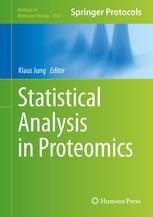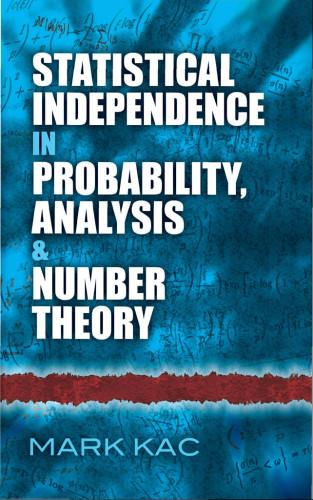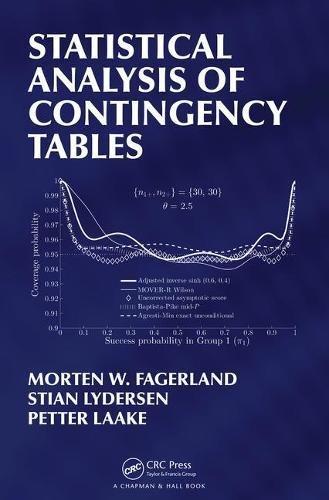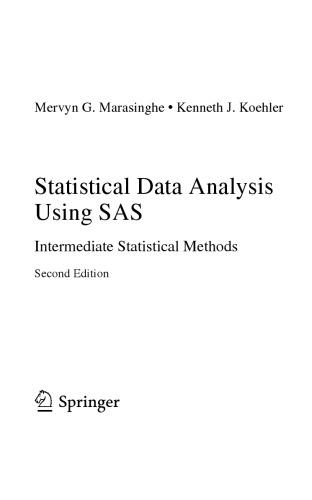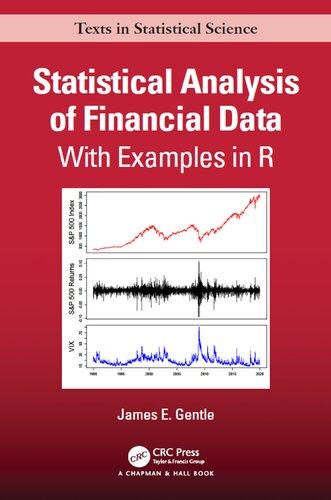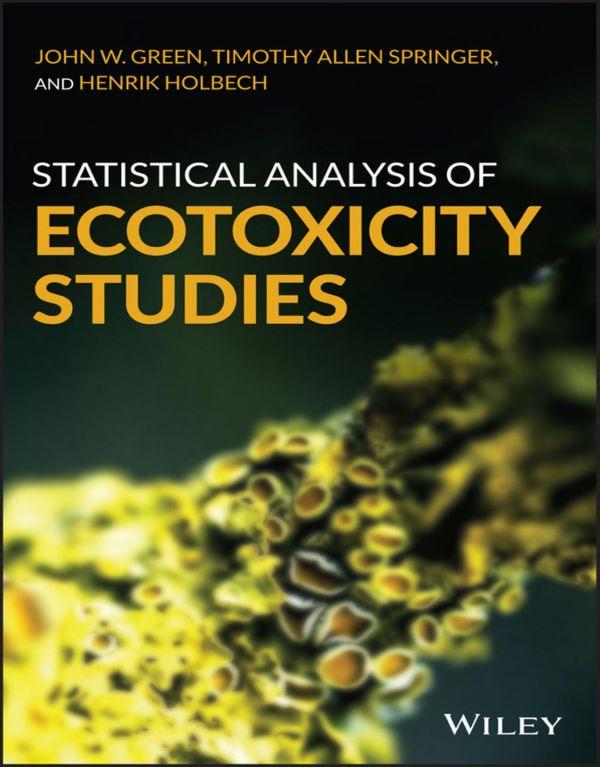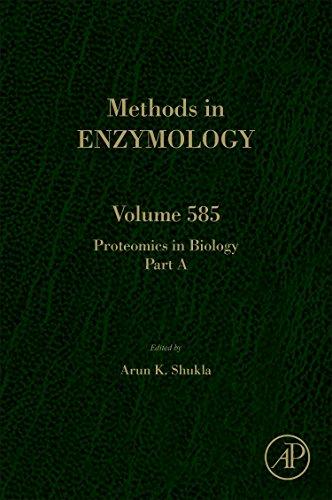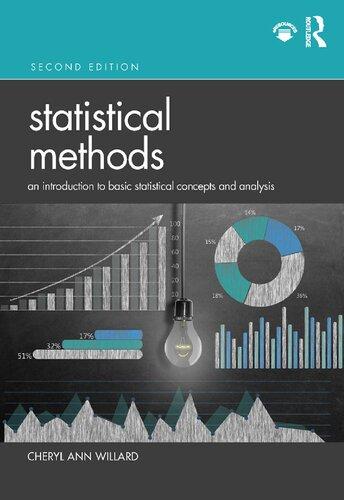Statistical Analysis in Proteomics
Edited by Klaus Jung
Department of Medical Statistics, University Medical Center Göttingen, Göttingen, Germany
Editor Klaus Jung
Department of Medical Statistics
University Medical Center Göttingen
Göttingen, Germany
ISSN 1064-3745
Methods in Molecular Biology
ISSN 1940-6029 (electronic)
ISBN 978-1-4939-3105-7 ISBN 978-1-4939-3106-4 (eBook)
DOI 10.1007/978-1-4939-3106-4
Library of Congress Control Number: 2015952312
Springer New York Heidelberg Dordrecht London © Springer Science+Business Media New York 2016
This work is subject to copyright. All rights are reserved by the Publisher, whether the whole or part of the material is concerned, specifically the rights of translation, reprinting, reuse of illustrations, recitation, broadcasting, reproduction on microfilms or in any other physical way, and transmission or information storage and retrieval, electronic adaptation, computer software, or by similar or dissimilar methodology now known or hereafter developed.
The use of general descriptive names, registered names, trademarks, service marks, etc. in this publication does not imply, even in the absence of a specific statement, that such names are exempt from the relevant protective laws and regulations and therefore free for general use.
The publisher, the authors and the editors are safe to assume that the advice and information in this book are believed to be true and accurate at the date of publication. Neither the publisher nor the authors or the editors give a warranty, express or implied, with respect to the material contained herein or for any errors or omissions that may have been made.
Cover illustration: For the complete image, please see Figure 2 of Chapter 3.
Printed on acid-free paper
Humana Press is a brand of Springer Springer Science+Business Media LLC New York is part of Springer Science+Business Media (www.springer.com)
Preface
Among the high-throughput technologies that are currently used in biomedical research, those used in proteomics are perhaps the oldest. While mass spectrometry and 2-D gel electrophoresis were already used in the 1980s for simultaneous measuring of the abundance of multiple proteins, statistical methods for the analysis of high-throughput data experienced their great evolution first with the development of DNA microarrays in the mid-1990s.
Although there is a large overlap between statistical methods for the different “omics” fields, methods for analyzing data from proteomics experiments need their own specific adaptations. Therefore, the aim of this book is to provide a collection of frequently used statistical methods in the field of proteomics. This book is designated to statisticians who are involved in the planning and analysis of proteomics experiments, beginners, as well as advanced researchers. It is also designated to biologists, biochemists, and medical researchers who want to learn more about the statistical opportunities in the analysis of proteomics data.
The different chapters of this book focus on the planning of proteomics experiments, the preprocessing and analysis of the data, the integration of proteomics data with other high-throughput data, as well as some special topics. For statisticians who are new in the area of proteomics, the first chapter provides a detailed overview of the laboratory techniques used in this exciting research area.
Göttingen, Germany Klaus Jung
Preface
Contributors.
1 Introduction to Proteomics Technologies 3 Christof Lenz and Hassan Dihazi
2 Topics in Study Design and Analysis for Multistage Clinical Proteomics Studies .
Irene Sui Lan Zeng
3 Preprocessing and Analysis of LC-MS-Based Proteomic Data.
Tsung-Heng Tsai, Minkun Wang, and Habtom W. Ressom
4 Normalization of Reverse Phase Protein Microarray Data: Choosing the Best Normalization Analyte. .
Antonella Chiechi
5 Outlier Detection for Mass Spectrometric Data.
HyungJun Cho and Soo-Heang Eo
PART II GROUP COMPARISONS
6 Visualization and Differential Analysis of Protein Expression Data Using R .
Tomé S. Silva and Nadège Richard
7 False Discovery Rate Estimation in Proteomics
Suruchi Aggarwal and Amit Kumar Yadav
8 A Nonparametric Bayesian Model for Nested Clustering.
Juhee Lee, Peter Müller, Yitan Zhu, and Yuan Ji
9 Set-Based Test Procedures for the Functional Analysis of Protein Lists from Differential Analysis
Jochen Kruppa and Klaus Jung
PART III CLASSIFICATION METHODS
10 Classification of Samples with Order-Restricted Discriminant Rules. .
David Conde, Miguel A. Fernández, Bonifacio Salvador, and Cristina Rueda
11 Application of Discriminant Analysis and Cross-Validation on Proteomics Data
Julia Kuligowski, David Pérez-Guaita, and Guillermo Quintás
12 Protein Sequence Analysis by Proximities
Frank-Michael Schleif
13 Statistical Method for Integrative Platform Analysis: Application to Integration of Proteomic and Microarray Data. . .
Xin Gao
14 Data Fusion in Metabolomics and Proteomics for Biomarker Discovery. .
Lionel Blanchet and Agnieszka Smolinska
PART V SPECIAL TOPICS
15 Reconstruction of Protein Networks Using Reverse-Phase Protein Array Data .
Silvia von der Heyde, Johanna Sonntag, Frank Kramer, Christian Bender, Ulrike Korf, and Tim Beißbarth
16 Detection of Unknown Amino Acid Substitutions Using Error-Tolerant Database Search.
Sven H. Giese, Franziska Zickmann, and Bernhard Y. Renard
17 Data Analysis Strategies for Protein Modification Identification.
Yan Fu
18 Dissecting the iTRAQ Data Analysis .
Suruchi Aggarwal and Amit Kumar Yadav
19 Statistical Aspects in Proteomic Biomarker Discovery .
Klaus Jung
Index
Contributors
SURUCHI AGGARWAL • Immunology Group, International Centre for Genetic Engineering and Biotechnology, New Delhi, India
TIM BEIßBARTH • Department of Medical Statistics, University Medical Center Göttingen, Göttingen, Germany
CHRISTIAN BENDER • TRON-Translational Oncology at the University Medical Center Mainz, Mainz, Germany
LIONEL BLANCHET • Analytical Chemistry-Chemometrics, Institute for Molecules and Materials, Radboud University Nijmegen, Nijmegen, The Netherlands; Department of Biochemistry, Nijmegen Centre for Molecular Life Sciences, Radboud University Medical Centre, Nijmegen, The Netherlands
ANTONELLA CHIECHI • Department of Medicine, Indiana University School of Medicine, Indianapolis, IN, USA
HYUNGJUN CHO • Department of Statistics, Korea University, Seoul, South Korea
DAVID CONDE • Departamento de Estadística e Investigación Operativa, Facultad de Ciencias, Universidad de Valladolid, Valladolid, Spain
HASSAN DIHAZI • Clinic of Nephrology and Rheumatology, University Medical Center Göttingen, Göttingen, Germany
SOO-HEANG EO • Department of Statistics, Korea University, Seoul, South Korea
MIGUEL A. FERNÁNDEZ • Departamento de Estadística e Investigación Operativa, Facultad de Ciencias, Universidad de Valladolid, Valladolid, Spain
YAN FU • National Center for Mathematics and Interdisciplinary Sciences, Key Laboratory of Random Complex Structures and Data Science, Academy of Mathematics and Systems Science, Chinese Academy of Sciences, Beijing, China
XIN GAO • Department of Mathematics and Statistics, York University, Toronto, ON, Canada
SVEN H. GIESE • Research Group Bioinformatics (NG4), Robert Koch-Institute, Berlin, Germany; Department of Bioanalytics, Institute of Biotechnology, Technische Universität Berlin, Berlin, Germany; Wellcome Trust Centre for Cell Biology, School of Biological Sciences, University of Edinburgh, Edinburgh, UK
SILVIA VON DER HEYDE • Department of Medical Statistics, University Medical Center Göttingen, Göttingen, Germany; IndivuTest GmbH, Hamburg, Germany
YUAN JI • Department of Health Studies, The University of Chicago, Chicago, IL, USA
KLAUS JUNG • Department of Medical Statistics, Georg-August-University Göttingen, Göttingen, Germany
ULRIKE KORF • Division of Molecular Genome Analysis, German Cancer Research Center (DKFZ), Heidelberg, Germany
FRANK KRAMER • Department of Medical Statistics, University Medical Center Göttingen, Göttingen, Germany
JOCHEN KRUPPA • Department of Medical Statistics, Georg-August-University Göttingen, Göttingen, Germany
JULIA KULIGOWSKI • Neonatal Research Centre, Health Research Institute La Fe, Valencia, Spain
JUHEE LEE • Department of Applied Mathematics and Statistics, Santa Cruz, CA, USA
CHRISTOF LENZ • Bioanalytical Mass Spectrometry, Max Planck Institute for Biophysical Chemistry, Göttingen, Germany; Core Facility Proteomics, Institute of Clinical Chemistry, University Medical Center, Göttingen, Germany
PETER MÜLLER • Department of Mathematics, Austin, TX, USA
DAVID PÉREZ-GUAITA • Centre for Biospectroscopy, School of Chemistry, Monash University, Clayton, Australia
GUILLERMO QUINTÁS • Safety and sustainability Division, Leitat Technological Center, Valencia, Spain; Analytical Unit, Health Research Institute La Fe, Valencia, Spain
BERNHARD Y. RENARD • Research Group Bioinformatics (NG4), Robert Koch-Institute, Berlin, Germany
HABTOM W. RESSOM • Department of Oncology, Lombardi Comprehensive Cancer Center, Georgetown University Medical Center, Washington, DC, USA
NADÈGE RICHARD • CCMAR, Centre of Marine Sciences of Algarve, University of Algarve, Faro, Portugal
CRISTINA RUEDA • Departamento de Estadística e Investigación Operativa, Facultad de Ciencias, Universidad de Valladolid, Valladolid, Spain
BONIFACIO SALVADOR • Departamento de Estadística e Investigación Operativa, Facultad de Ciencias, Universidad de Valladolid, Valladolid, Spain
FRANK-MICHAEL SCHLEIF • School of Computer Science, University of Birmingham, Edgbaston, Birmingham, UK
TOMÉ S. SILVA • SPAROS Lda., Olhão, Portugal
AGNIESZKA SMOLINSKA • Department of Toxicology, Nutrition and Toxicology Research Institute Maastricht (NUTRIM), Maastricht University, Maastricht, The Netherlands
JOHANNA SONNTAG • Division of Molecular Genome Analysis, German Cancer Research Center (DKFZ), Heidelberg, Germany
TSUNG-HENG TSAI • Department of Oncology, Lombardi Comprehensive Cancer Center, Georgetown University Medical Center, Washington, DC, USA; Bradley Department of Electrical and Computer Engineering, Virginia Tech, Arlington, VA, USA
MINKUN WANG • Department of Oncology, Lombardi Comprehensive Cancer Center, Georgetown University Medical Center, Washington, DC, USA; Bradley Department of Electrical and Computer Engineering, Virginia Tech, Arlington, VA, USA
AMIT KUMAR YADAV • Drug Discovery Research Center (DDRC), Translational Health Science and Technology Institute, Faridabad, Haryana, India
IRENE SUI LAN ZENG • The Department of Statistics, The University of Auckland, Auckland, New Zealand
YITAN ZHU • Program for Computational Genomics and Medicine Research Institute, NorthShore University HealthSystem, Evanston, IL, USA
FRANZISKA ZICKMANN • Research Group Bioinformatics (NG4), Robert Koch-Institute, Berlin, Germany
Introduction to Proteomics Technologies
Christof Lenz and Hassan Dihazi
Abstract
Compared to genomics or transcriptomics, proteomics is often regarded as an “emerging technology,” i.e., as not having reached the same level of maturity. While the successful implementation of proteomics workflows and technology still requires significant levels of expertise and specialization, great strides have been made to make the technology more powerful, streamlined and accessible. In 2014, two landmark studies published the first draft versions of the human proteome.
We aim to provide an introduction specifically into the background of mass spectrometry (MS)-based proteomics. Within the field, mass spectrometry has emerged as a core technology. Coupled to increasingly powerful separations and data processing and bioinformatics solution, it allows the quantitative analysis of whole proteomes within a matter of days, a timescale that has made global comparative proteome studies feasible at last. We present and discuss the basic concepts behind proteomics mass spectrometry and the accompanying topic of protein and peptide separations, with a focus on the properties of datasets emerging from such studies.
Key words Proteomics, 2-DE, Electrophoresis, Mass spectrometry, Separations
1 Introduction
The term “proteomics” in its original meaning denotes the study of the entire observable protein complement (or proteome) of a biological system, be it a relatively homogeneous microbial cell culture or a tissue sample obtained from a hospital patient. When Marc Wilkins first coined the term “proteome” in 1994, however, proteomics was a distant goal rather than a tangible technological reality. Even the identification of a few tens of proteins would take researchers weeks to months of work, let alone the assessment of their quantities or modification status. Over the past 20 years however proteomics has grown from a promise into a mature set of technologies that has allowed for example the publication of first full draft versions of the human proteome in 2014 [1, 2]. Virtually all aspects of proteome analysis have seen huge improvements, from sample preparation, protein and peptide separations, detection and quantitative analysis especially by mass spectrometry which has
Klaus Jung (ed.), Statistical Analysis in Proteomics, Methods in Molecular Biology, vol. 1362, DOI 10.1007/978-1-4939-3106-4_1, © Springer Science+Business Media New York 2016
emerged as a core proteomics technology, to the statistical and bioinformatic analysis of the large and multilayered datasets that a global “omics” approach produces.
Following technological progress, Tyers and Mann in 2003 redefined proteomics as “almost everything post-genomic: the study of the proteome in any given cell and the set of all protein isoforms and modifications, the interactions between them, the structural description of proteins and their higher-order complexes” [3]. While the genome of an organism is considered to be mostly static, the proteome shows dynamic properties with protein profiles changing in dependence of time and a variety of extracellular and intracellular stimuli (i.e., cell cycle, temperature, differentiation, stress, apoptotic signals). The realization that the proteome is highly dynamic in turn led to an increased demand for quantitative information, as information about the detectability of a protein was superseded by information about relative changes in its abundance, modification status, localization, and interaction partners [4].
Finally, an increased appreciation of the complexity of the proteome led to a refinement of our understanding what defines a protein. The seemingly simple concept of “DNA makes RNA makes proteins” does not describe the observed complexity of proteins in its entirety. While the huge success of genome sequence projects over the past decades has certainly been a prerequisite for the progress observed in proteomics [4], there is a plethora of parameters defining the biological role of a protein that are not determined by the gene(s) encoding its sequence, e.g., splicing events, enzymatic processing, or posttranslational modifications [5]. Consequently the term “protein species” is finding increased use as it more accurately describes protein diversity [6, 7].
In addition, there is currently no amplification technology for proteins comparable to PCR. The huge dynamic range observed for protein quantities in biological samples immediately translates into dynamic range requirements for any analytical approach to proteomics samples, necessitating elaborate separation and enrichment strategies to simplify biological specimens [8].
In this introduction we discuss some of the major technical and experimental approaches that are taken in proteomics research today, and discuss how the structure of the resulting data influences bioinformatics approaches to generate knowledge from these data. Special focus is given to protein and peptide separations, and to mass spectrometry which has emerged as a key protein detection and quantitation technology in proteomics research.
2 Separation Technologies in Proteomics
2.1 Bottom-Up Versus Top-Down Proteomics
Separations are a central feature of all analytical strategies in proteomics. The proteins contained in any biological specimen may be separated and analyzed either on the intact protein level or on the
Christof Lenz and Hassan Dihazi
2.2 Protein Level Separations
2.2.1 Sodium Dodecyl Sulfate Polyacrylamide Gel Electrophoresis (SDS-PAGE)
peptide level following endoproteinase digestion. Digestion to peptides has many analytical benefits that have improved the performance of proteomics workflows, especially if mass spectrometry is used for detection. On the level of sample handling and separations, peptides generated by for example trypsin digestion of proteins are a far more homogeneous group of analytes than the underlying proteins with regard to molecular weight, hydrophobicity and solvent solubility, since they do mostly not exhibit any significant higher order structure. In addition they show a much more controlled charging behavior under controlled pH conditions, and will in the majority not be modified by for example glycosylation sites. Consequently many peptide separations show much higher resolution than protein separations, especially where chromatography-based separations are concerned.
In addition, mass spectrometry as the most frequently used detection principle in proteomics heavily favors peptides over proteins. Peptides show a more uniform and efficient ionization and charging behavior than proteins, produce better response on several types of mass spectrometer detectors and, most importantly, can be routinely fragmented by ion activation techniques to provide sequence and structure information. Taken together the detection of for example tryptic peptides in complex mixtures by modern mass spectrometry equipment is orders of magnitude more sensitive than the detection of proteins. Therefore the most common approach in proteomics is to prepare and separate proteins, digest them with endoproteinases, separate the resulting peptides yet again, and analyze them for identity, modification state, and quantity by mass spectrometry. In addition, enrichment strategies used to target low abundance subpopulations maybe employed. This so-called “bottom-up” approach comes with its own challenges: digestion multiplies the number of analytes in the sample (e.g., 2000 protein will produce an average of >100,000 peptides on tryptic digestion), and it is not always straightforward to backassign a digest peptide to the protein it originated from, a problem referred to as “protein inference” [5]. Still, the benefits outweigh these challenges by far, making “bottom-up” analysis the prevalent approach in proteomics as compared to the “top-down” approach where proteins are treated and analyzed in their intact state throughout [9, 10]. After discussing options for protein and peptide separations, we will then focus on the “bottom-up” approach and the principles applied to peptide analysis by mass spectrometry.
The approach most frequently taken for protein separation is still SDS-PAGE. Proteins are dissolved in a buffer containing sodium dodecyl sulfate (SDS), and the resulting negatively charged adducts are pulled through a gel of a defined polymerization degree (or pore size range) by electrophoretic migration. The separation is achieved according to the apparent molecular weight, or rather the hydrodynamic radius of the resulting protein-SDS adducts [11].
Lenz and Hassan Dihazi
SDS-PAGE is compatible with a very wide range of protein solubilization and sample handling requirements, making it a very good choice for the separation of for example very hydrophobic integral membrane proteins. After staining with Coomassie or silver staining, entire lanes covering a broad range of apparent molecular weight can be investigated. Depending on the scientific task, only proteins from defined MW regions can be investigated, and results can easily be correlated with for example Western blot analysis. One of the shortcomings of SDS-PAGE as a one-dimensional separation is its limited resolution, which does not allow to detect and separate more than a few tens of bands at best. Consequently it has to be combined with other separations strategies either on the protein or—after endoproteinase digestion—on the peptide level to successfully analyze complex proteome samples.
2.2.2 Two-Dimensional Gel Electrophoresis (2-DE)
High-resolution two-dimensional polyacrylamide gel electrophoresis (2D PAGE) is a commonly applied separation technique in proteomics, and has been one of its driving forces for decades [12, 13]. 2D PAGE allows the separation of proteins according to two largely orthogonal parameters (Fig. 1): their isoelectric point (pI) and their apparent molecular weight (Mr), enabling the separation of complex protein mixtures and their visualization on a single high-resolution gel [14–17]. Depending on the gel size and pH gradient used, 2D PAGE can resolve up to 5000 different proteins simultaneously and detect and quantify <1 ng of protein/ spot [17]. 2D PAGE can thus be used to generate protein expression profiles from different samples, e.g., healthy versus diseased,

Fig. 1 2-DE reference maps of tissue extract proteins. 150 μg protein was loaded on an 11-cm IPG strip with a linear pH gradient pI 5–8 for isoelectric focusing; a 12 % SDS-polyacrylamide gel was used for the SDS-PAGE. Proteins were stained with fluorescent stain
Christof
knockout versus wild type. Sample solubilization is a critical step for the reproducibility of the 2D PAGE to get as many proteins solubilized as possible in reproducible manner, to disrupt (in most cases) their non-covalent bonds, and to obtain them in a defined charge state without modification of the polypeptide [17]. Following solubilization, isoelectric focusing (IEF) is used as the first level of protein separation. IEF is very sensitive to charge alterations and therefore to sample contaminations, e.g., by salts that may alter the protein charge. The second dimension of separation is an SDS-PAGE where the proteins are separated according to their apparent molecular weight. Finally, the separated proteins are then visualized using a staining technique. Several staining methods are commonly used: (1) Coomassie Blue is used to visualize proteins separated by 2D PAGE but suffers from low sensitivity. (2) Silver staining is more sensitive than Coomassie Blue but involves a complex multistep staining protocol, which limits gel-to-gel reproducibility [18]. (3) Fluorescence-based staining is highly sensitive and has a wide linear range of detection between staining intensity and protein volume, enabling accurate quantitation of high and low abundance proteins [19, 20]. The fluorescence technologies offer also the possibility of multicolor labeling and detection. If samples have to be compared, they can be labeled with different dyes corresponding to different excitation and emission wavelengths, mixed and separated on a single gel allowing a differential analysis of protein expression [21–24]. After the staining step, gel images are captured and the resulting 2D maps are analyzed using dedicated image processing software. Spots of interest are then excised and processed for identification by mass spectrometry.
There are several limitations to 2D PAGE as a separation method for proteomic studies. For example, hydrophobic proteins hardly enter the gel and are often lost during 2D PAGE, limiting its used for the analysis of for example integral membrane proteins. Very high or very low molecular weight proteins, highly acidic or highly basic proteins may also be lost during gel separation. Due to the often limited staining sensitivity, 2D PAGE also requires relatively large amounts of protein.
In addition 2D PAGE involves many manual processing steps and is therefore not easily automated. Moreover, the heterogeneity of cell types in tissue samples makes their analysis with 2D-gels to a challenge. Due to these limitations of two-dimensional electrophoresis, separations techniques, such as multidimensional liquid chromatography and capillary electrophoresis upstream from the mass spectrometer offer solid alternatives that can overcome the 2D PAGE limitations.
The first separation step in 2D PAGE, i.e., isoelectric focusing (IEF), is sometimes also used as a standalone method to fractionate complex protein samples, and has been commercialized for example in the OFFGEL system. When used for protein
2.2.3
separations it suffers from the same limitations as mentioned above, and is therefore much more widely used as another dimension of peptide separation (pIEF) downstream [25].
As an alternative to electrophoretic separations such as SDS-PAGE or 2D PAGE, a wide range of chromatographic separation approaches have been established to separate and purify intact proteins, and have found their way into proteomics research [26, 27]. The separation is most frequently based on one of the three major physicochemical properties that describe proteins: hydrophobicity (reversed phase chromatography), charge (ion exchange chromatography), and molecular weight (size exclusion chromatography). In addition, affinity for example by noncovalent protein–protein interactions can be used as a separation principle [28–34].
Chromatography-based separations are relatively straightforward to scale up and automate, and are therefore especially suited for multi-stage separation workflows. Most separation principles suffer from a limited range of available buffer conditions which only allow to focus on subgroups of proteins for example in a certain molecular weight or charging region, but are less suitable for generic proteomics approaches. Consequently these separation principles are mostly employed where the enrichment or purification of a single protein or class of proteins is desired. Size exclusion chromatography (SEC) of proteins has emerged as a suitable prefractionation method for generic proteomics approaches as it is compatible with SDS-containing buffers that allow the solubilization of hydrophobic as well as hydrophilic proteins. It is inherently of low chromatographic resolution, but can be used to great success in multidimensional separation approaches as it has a high loading capacity.
In addition to the classical separation methods, the array technology provides an ideal tool to study enriched subsets of proteins or protein domains. Various protein array technologies have emerged over the last decades that promise rapid examination of different samples on a protein scale offering better perspectives for proteomics. Antibodies based arrays are highly promising in this case the antibodies are immobilized on a specially treated array surfaces. The samples of interest are then applied to the arrays and only the proteins that bind to the relevant antibodies remain bound to the chip and be analyzed and quantified. The immobilized molecules can also be peptides or other small molecules [35–37]. Readouts for protein-based arrays can derive from protein interactions, protein modifications or enzymatic activities. The quality of the immobilized molecule, e.g., antibody, is critical for the readout of the system. Once developed it could provide for a convenient proteome analysis.
ChromatographyBased Protein Separations
2.2.4 Chips and Arrays
Christof Lenz and Hassan Dihazi
2.3 Peptide Level Separations
2.3.1 ChromatographyBased Peptide Separations
2.3.2 ElectrophoresisBased Peptide Separations
There is a multitude of available peptide separation approaches that can be used to simplify the hundreds of thousands of peptides produced by enzymatic digestion of a complex protein sample. Similar to proteins, peptides may be separated according to a range of physicochemical properties, such as hydrophobicity, charging at defined pH or polarity. One prerequisite has forced the development of peptide separations for proteomics over the past years, i.e., that the last chromatographic separation step should be readily coupled to mass spectrometry to allow for highly automated LCMS/MS analyses. This makes several demands on an ideal separation strategy: it should work with volatile buffer systems at low flow rates that do not interfere with the mass spectrometer’s ionization process. In addition, it should be readily miniaturizable as the sensitivity of the electrospray ionization process used in most of today’s proteomics mass spectrometers is concentrationdependent, i.e., flow rates in the low nanoliter/min regime are highly desirable [38, 39]. Finally, this separation should be highly resolving for, for example, tryptic peptides, which typically have a length of 6–25 amino acid residues. All these requirements are best met by capillary diameter (50–75 μm) reversed phase-C18 chromatography under acidic conditions, e.g., with volatile formic or acetic acid buffer systems, at corresponding flow rates of 150–400 nl/min [40]. Indeed this chromatography regime seems to present a “sweet spot” when coupled to mass spectrometry. Together with improvements in chromatography materials, high-pressure liquid chromatography hardware and the use of long columns, many proteomics workflows today use this as the only separation step at all, an approach referred to as “single-shot proteomics” [41, 42]. In many cases however it can still be beneficial to add another dimension of chromatographic separation to the overall workflow to achieve greater simplification of the sample prior to for example mass spectrometric analysis. Any second chromatographic dimension preceding the final reversed phase separation hyphenated to the mass spectrometer only or offline should ideally be highly orthogonal to the latter, i.e., separate peptide analytes by a different physicochemical principle to ensure efficient separation, and be readily integrated into the overall workflow with regard to buffer systems without causing need for, for example, additional desalting or concentration steps. Examples of first dimension separations that are frequently used in proteomics research include strong cation exchange chromatography or reversed phase chromatography at neutral pH [43].
Several gel free separation techniques found their way to proteomics, among them capillary electrophoresis (CE) is a rapid and efficient technique used to separate a variety of compounds including proteins. In CE proteins are driven by electric field through electrolyte solution and are separated according to their ion mobility. The
Christof Lenz and Hassan Dihazi
advantage of this separation method is that it requires a low sample load [44, 45]. Coupled to the mass spectrometry as detection/identification method, the CE becomes an attractive separation method in proteome analysis. The on-line coupling of CE and MS offered an interesting alternative to 2D PAGE and to common chromatographic separation techniques, the protein mixtures can be analyzed within short time and with high resolution [46].
3 Mass Spectrometry-Based Proteomics
Mass spectrometry (MS) has emerged as a key technology in proteomics as it presents the most versatile high sensitivity detection system for peptide and protein analysis today. Contrary to for example antibody-based detection, MS is unbiased in principle, although mass spectrometry response is greatly influenced by the physicochemical properties of peptides and proteins. In addition, there are a number of different mass spectrometry techniques or “flavors” that will be described in the next paragraphs.
Mass spectrometry involves the manipulation of ionized peptides and proteins under high vacuum conditions. Consequently, ways have to be found to get rid of the solvent and adduct shells that usually surround these analytes in any solution, and transfer charge(s) onto them in a controlled and reproducible fashion without inducing analyte decomposition. Two so-called “soft” ionization techniques have emerged over the past 25 years that allow for this largely non-destructive transfer from solution to the gas phase: Matrix Assisted Laser Desorption/Ionization (MALDI) and Electrospray Ionization (ESI). To recognize the almost revolutionary contribution that these techniques have had on the Life Sciences, the Nobel Prize in Chemistry 2002 was awarded to key inventors John Fenn (ESI) and Koichi Tanaka (MALDI) jointly with Kurt Wüthrich (for NMR).
3.1.1 Matrix Assisted Laser Desorption/Ionization (MALDI)
In MALDI (Matrix Assisted Laser Desorption/Ionization), peptides or proteins are mixed in solution with a large excess (roughly 10E4) of a small, UV-absorbing organic molecule, the so-called matrix. Microliter volumes of this solution are then deposited on a flat target made of conductive material, and the droplet dried by slow evaporation. Under suitable conditions, co-crystallization occurs where the analyte molecules are embedded in matrix crystals. The sample plate with the dried spots is then introduced into the vacuum chamber of the mass spectrometer, where it is irradiated with short nanosecond pulses of UV laser light. In the resulting process of rapid desorption and ionization, positively charged analyte ions are formed which can then be extracted from the source region using electrostatic fields and further manipulated for mass analysis [47–50].
3.1 Ionization Techniques
3.1.2 Electrospray
Ionization (ESI)
During the MALDI process, peptides and proteins are ionized mainly as singly charged [M+H]+ species. This introduces both benefits and limitations: on the one hand, MALDI mass spectra are usually straightforward to interpret as in most cases each observed signal corresponds to a single peak. On the other hand, this necessitates the use of mass analyzers with a large “mass range” (more precisely: m/z range) as high molecular weight ions translate into high m/z signals. In addition, singly charged biomolecules are in many cases more problematic with regard to sequence analysis since the repulsion between multiple charges on the same molecule is one of the driving forces for efficient fragmentation. Finally, MALDI is a discontinuous technique where usually several hundred to thousand individual laser shot experiments have to be accumulated to obtain high quality spectra. Even at the kHz laser frequencies available in modern instrumentation, this makes the process of for example peptide sequencing slow compared to ESI-based--> instrumentation. Finally MALDI cannot be directly hyphenated to chromatographic separations. While the latter limitation can be moderated by offline coupling (“LC-MALDI”), the combination of limiting factors has led to a decrease in the use of MALDI-based mass spectrometers in proteomics research. It still finds significant use in defined applications that require rapid fingerprinting from a non-separated sample, e.g., for microbial identification [51].
ESI (Electrospray Ionization) today is the standard ionization technique in proteomics research. For ESI, a volume or stream of an aqueous analyte solution usually containing organic modifiers is sprayed from a sharp (μm diameter) needle tip towards the orifice (i.e., the entry to the vacuum section) of a mass spectrometer. The process is driven by application of a kV electrostatic potential differential between the needle and the orifice and happens at atmospheric pressure, making ESI an instance of the larger group of ionization techniques referred to as Atmospheric Pressure Ionization, or API. The thin liquid filament produced from the needle is quickly broken up into small droplets containing a small number of analyte ions preformed in solution. Through a combination of electrostatic repulsion (leading to “Coulomb explosions” that break droplets apart) and evaporation of solvent molecules, droplet of diminishing size that contain less and less analyte ions are produced until finally single analyte ions are produced either through droplet shrinking (“charge residue model”) or by emission from highly charged droplets containing other analyte molecules (“ion evaporation model”). The produced analyte ions usually contain two to five charges for peptide analytes (e.g., [M + 2H]2+), or tens of charges in the case of intact protein analytes [38, 52–54].
The higher charging observed in ESI compared to MALDI has both advantages and disadvantages. Multiple charges compress the m/z range required from the mass analyzer, since, for example, for peptide produced by trypsination the majority of m/z values
Christof Lenz and Hassan Dihazi
observed fall into the range of 350–1250. In addition, multiple charges on an analyte help drive fragmentation through charge repulsion or are actually (in the case of Electron Transfer Dissociation, or ETD) a prerequisite for some fragmentation techniques. In addition, multiple charge states (or m/z values) of the same analyte provide multiple readouts of the analyte’s mass and thus potentially more accurate mass determinations. On the downside the presence of multiple charge states for each analyte in a complex mixture requires algorithms to properly assign (“deconvolute”) these charge states, and often complicates spectra. The main benefit of ESI as a continuous ionization technique is that it is readily hyphenated to chromatographic or electrophoretic separations, providing a readout of the separation eluent in real time. Provided that the mass analyzer is fast enough to perform sequencing events at sufficient speed this leads to a very high sequencing capacity of the resulting hyphenated LC-ESI-MS setups.
3.2 Mass Analyzers
Following ionization, peptides and proteins of different mass and charge are separated in the vacuum region of the mass spectrometer by their mass-to-charge (m/z) ratio and detected. The m/z separation by different mass analyzers follows very different physical principles. Their performance can be characterized by the following parameters: (1) m/z range (or “mass range”), i.e., the range of m/z values for which ions can be transmitted at all; (2) transmission, i.e., the percentage of ions successfully transmitted through the mass analyzer in a given mode of operation. Transmission is invariably dependent on m/z value; (3) resolution, i.e., the ability to separate ions of similar m/z. Today, the most common definition used for resolution is the m/z value of a peak divided by its width at half height (FWHM, Full Width Half Height); (4) mass accuracy, i.e., the deviation of observed m/z values from their theoretically expected values, which is usually specified in parts per million (ppm). In this section we focus on the most common analyzer types used in proteomics mass spectrometry, and discuss their features and benefits rather than principles of operation.
Quadrupole and quadrupole ion trap mass analyzers are inherently low resolution, low mass accuracy analyzers which are often operated at “unit” resolution, i.e., a constant peak width of ~0.7 FWHM that translates into resolution values of 500–1500 for typical peptide peaks in the range of m/z 400–1000. In addition, they are relatively slow when operated in scanning mode, i.e., when covering a wide m/z range. To make up for this low resolution they possess excellent transmission characteristics with transmission values in excess of 90 % for wide m/z ranges. Consequently they are often used to filter for specific ions, e.g., when selecting for MS/MS precursors, or for manipulating ion packages, e.g., when used as collision cells for inducing MS/MS fragmentation (see below) [55].
Time-of-Flight (ToF) mass analyzers are of moderate resolution (10,000–40,000 FWHM) and exhibit mass accuracies in the range of 5–25 ppm with frequent calibration. To achieve good resolution, ions are usually accelerated in a direction orthogonal to their initial motion, and reflected on a so-called reflectron, or mirror stage, before hitting the detector. As a consequence of orthogonal acceleration and reflecting the ion beam, transmission is usually low, on the order of a few percent. The low transmission is partially recovered by the high speed of acquisition [56]. Modern Time-of-Flight analyzers operate at frequencies of up to 5 kHz, i.e., 5000 individual experiments per second. Even when these are accumulated before writing the data to disk, acquisition speed of up to 100 Spectra-to-Disk can be obtained. Through data accumulation the signal-to-noise ratio can be improved even at weak absolute signal strength. Its discontinuous mode of operation makes Time-of-Flight the perfect match for the equally discontinuous MALDI. Indeed, MALDI-ToF mass spectrometers were one of the first high resolution instrument class introduced into proteomics research [57, 58]. Today, however, ESI-ToF mass spectrometers are as common.
Orbitrap mass analyzers are high resolution (15,000–140,000 FWHM), high accuracy (0.5–5 ppm) analyzers that have almost become a standard in proteomics mass spectrometry. Ions are introduced into a small spindle-shaped electrostatic cell, and the imaging current recorded from their axial motion recorded in a non-destructive fashion. From the observed frequency transient, the m/z spectrum is then calculated by Fourier Transformation. Same as for the similarly operated Fourier Transform-Ion Cyclotron Resonance (FT-ICR) mass analyzers, mass resolution is a function of transient duration and decay to higher m/z values, so practical resolution values obtained are similar to those obtained for ToF instruments [59, 60]. The Orbitrap mass analyzer does not require frequent recalibration, making it a very good choice for instrument operated in high throughput environments.
Proteomics samples are highly complex mixtures of very similar analytes. Following the most commonly employed bottom-up approach that involves tryptic digestion, a sample containing for example 2000 protein species will produce an estimate 100,000 peptides on digestion [publication Matthias Mann]. Consequently it is not enough to determine the accurate mass of a digest peptide to unambiguously determine its identity. Even when combined with chromatographic retention time information, an accurate mass tag (AMT) will only serve to identify a tryptic peptide in proteomes of limited size, and only when information about for example posttranslational modifications is excluded [Lit]. In most cases, information about the peptide’s sequence has to be obtained within the mass spectrometer to allow for unambiguous
3.3 Tandem Mass Spectrometry (MS/MS)
Christof Lenz and Hassan Dihazi
3.3.1 Product Ion Scanning
identification. This usually requires tandem mass spectrometry, i.e., the use of two mass analyzers in combination with an event causing sequence-specific degradation of the peptide.
The most common tandem mass spectrometry implementation is the product ion scan. A peptide ion of defined m/z value is filtered from the whole population of ions using a first MS stage, often achieved using a quadrupole mass filter. This isolated precursor ion is then fragmented in the mass spectrometer to produce sequencespecific ions, which are then separated by their m/z and detected in a second stage mass analyzer, e.g., a ToF or an Orbitrap. Each peptide is thus characterized by its time of introduction to the MS (i.e., its retention time when the MS coupled to a chromatographic separation), its precursor m/z value and a set of fragment m/z values. In the positive ion mode and when using suitable fragmentation techniques (see below), peptides fortunately produce a defined set of largely sequence-specific fragments which can be denominated using a system devised by Roepstorff and Fohlman as early as 1984 [61, 62].
3.3.2 Precursor Ion and Constant Neutral Loss Scanning
3.3.3 Data-Dependent Versus Data-Independent Acquisition
In product ion scanning, all fragments derived from a single precursor are recorded. In some instances it can also be useful to alternatively record all precursors producing a single fragment, or marker ion, e.g., when this is predictive for a structural feature, e.g., a posttranslational modification. For these so-called precursor ion scans, the first stage mass analyzer is scanned across the precursor m/z range while the second stage mass analyzer is set to a fixed m/z to filter for the marker ion. Precursor ion scans have been successfully employed to screen for, for example, phosphorylated or glycosylated peptide precursor ions in complex mixtures using either Triple Quadrupole (QqQ) or Quadrupole-Time-of Flight (QqToF) mass spectrometers [63, 64].
A related experiment is the Constant Neutral Loss Scan, where both mass analyzers are scanned simultaneously but at an m/z offset to detect precursors specifically losing neutral molecules indicating for example phosphorylation. Neither precursor ion scanning nor constant neutral loss scanning are much used in proteomics studies today, since specific detection of for example phosphopeptides may be achieved much more efficiently by for example affinity enrichment.
In a typical proteomics mass spectrometry experiment, in excess of 100,000 peptide precursors need to be sequenced in a few hours of mass spectrometer acquisition time. Consequently the selection and sequencing of peptide precursors has to be a fully automated process, with the required sequencing speeds being on the order of 25 peptides/s [65]. Modern mass spectrometers achieve this through Data Dependent Acquisition (DDA) routines
implemented in their acquisition software. In DDA mass spectrometer first performs an MS scan to detect all peptide precursors coming from the ion source at a specific time. Up to 25 suitable precursors are the identified using criteria as intensity, charge state and m/z, and sequentially submitted to a corresponding number of product ion scans for obtaining sequence-specific fragmentation. Once finished, another cycle is started with the next MS scan [66, 67]. Current instrumentation is capable of sequencing speed of ten product ion spectra per second, producing a capacity of up to 36,000 sequencing events/h. As not all sequencing events are successful and nonredundant, around five to six peptide identifications/s of acquisition time represent the current state of the art [65, 68, 69].
The discrepancy between the required and the achieved sequencing speeds and the resulting undersampling of complex samples has prompted researchers and instrument manufacturers to look for fundamentally different data acquisition strategies especially for reproducible quantitative comparison of large numbers of samples.
If undersampling in DDA renders the detection and quantitative analysis of analytes of interest irreproducible, one alternative is to forego a dynamic selection of peptide precursors and rather target sets of peptides that carry the desired information, e.g., about the quantity of a set of proteins. Selected Reaction Monitoring (SRM, also frequently called Multiple Reaction Monitoring, or MRM) on Triple Quadrupole Mass Spectrometers is the most popular targeted acquisition strategy. In SRM, the two quadrupole mass analyzers of the spectrometer are set to preprogrammed fixed m/z values that filter for a combination of a peptide precursor and, after fragmentation in a collision cell, a sequence-specific fragment. While this so-called transition does not carry full spectral information, it can be seen as a highly specific detection channel for these peptides. Several hundred of these channels can be monitored sequentially in a single LC-ESI-SRM experiment to provide quantitative information on dozens of peptides of interest [70].
Targeted mass spectrometry methods require upfront knowledge and specification of the analytes of interest, and are limited by the number of transitions that can be monitored in a single experiment. Newer developments in Data-Independent Acquisition (DIA), e.g., SWATH acquisition (Sequential Window Analysis of All Theoretical Fragment ion Spectra) [71], allow the simultaneous detection and quantitation of a principally unlimited number of analytes in a single LC-ESI-MS experiment. All peptide precursors undergo fragmentation at less stringent filtering, and traces for sequence-specific fragments contained in a previously obtained spectral library are extracted from the data to provide quantitative information. From a single experiment, 10,000 s of fragment ion traces can be extracted that allow consistent quantitation of for
3.3.4
3.4 Analysis of MS and MS/MS Data
3.4.1 Peptide
Identification
example 2500 proteins derived from 15,000 peptides from S. cerevisiae [72]. For brevity we refer the reader to the literature for details of the implementation.
All MS/MS experiments and approaches require techniques for a controlled, reproducible and reproducible activation of precursor ions to obtain structure-specific decomposition in the mass spectrometer’s vacuum [73]. While there are a multitude of techniques for ion activation available, only a handful of them are suitable for the large scale analysis of peptides for proteomics.
Collision-Induced Dissociation (or CID, sometimes referred to as Collisionally Activated Dissociation, or CAD) is a so-called ergodic, even-electron ion activation technique where excess vibrational energy is deposited in peptide precursors through multiple collisions with small neutral gas molecules, e.g., nitrogen, in a collision cell of defined gas pressure in the mass spectrometer, leading to eventual breaking of covalent bonds. CID is by far the most commonly used ion activation technique in proteomics mass spectrometry, and is highly reproducible even across different instrumental platforms and laboratories. It provides excellent sequence information especially on non-modified peptides generated from the trypsination of proteins for bottom-up proteome analysis [74, 75]. For large peptide precursors or peptides carrying labile modifications, e.g., glycosylation, it often produces only limited sequence information. Electron Transfer Dissociation (or ETD, related to the less-often applied Electron Capture Dissociation, or ECD) can be used as an alternative or even complementary ion activation technique in these cases. In ETD, a single, odd electron is transferred from a reactant gas onto the peptide precursor in the mass spectrometer. The resulting odd-electron fragmentation mechanisms are quite different from those produced in CID [76], e.g., labile modifications are often retained on peptides. ETD requires the peptide precursor to be higher charged (n ≥ 3) for efficient fragmentation though, making it a better match for larger peptides produced using enzymes other than trypsin, or even for small intact proteins [77].
How to exploit now the information contained in LC-ESI-MS data sets obtained from complex peptide mixtures? Each fragmented peptide precursor is characterized by (1) it retention time, (2) its intact mass-to charge ratio, (3) its charge state which can in most cases be deduced from the isotopic pattern and (4) a set of more or less structure-specific fragment ions. A typical LC-ESI-MS data set will today encompass in excess of 100,000 such precursor “feature sets.”
At the beginning of peptide mass spectrometry, sequence was often derived from MS/MS fragment ion patterns by de novo sequencing [78]. By reading out amino acid-specific mass
Ion Activation
Christof Lenz and Hassan Dihazi
differences between ions of either C- or N-terminal fragment ion series, partial stretches of a peptide’s sequence can in many cases be derived from the spectrum. By combining several such stretches and information about for example the presence of individual amino acids or the C-terminal amino acid which may be derived from individual marker ions, the complete sequence of a peptide can be obtained in select cases. The process is highly error-prone though and hampered by incomplete fragmentation, overlay of different ion series, or additional non-sequence-specific fragmentation events. It is therefore usually used as a last resort in cases where other approaches fail, e.g., in the case of proteins from organisms which are poorly covered in genome and proteome sequence databases. Related to full-blown de novo sequencing is the peptide sequence tag approach [79] where a short sequence tag of as little as three to four consecutive amino acids together with information on the remaining masses (or tag) required to combine to the peptide’s full mass are often sufficient for unambiguous identification of the peptide sequence in a full proteome sequence database. Same as de novo sequencing, the approach is still relatively error-prone and computationally expensive.
Today, protein identification in the majority of cases is achieved by Peptide Fragment Fingerprint (PFF) matching. Here the set of fragments characterizing a peptide precursor is not interpreted at all, but is pattern-matched against fragment patterns predicted in silico for peptides generated from a theoretical digest of all proteins in a protein sequence database. Each match is then scored based on the agreement between the observed and the predicted pattern. In the most commonly used probabilistic approach, the score reflects the chances of a random assignment against the background of the whole database. PFF matching is implemented in a significant number of both academic and commercial algorithms, or database search engines, such as SEQUEST [80], Mascot [81], OMSSA [82], Paragon [83], or Andromeda [84].
In case of peptide modifications, the exact position of the modification on the primary sequence of the peptide may be as important as its presence in itself, e.g., in the case of phosphorylation where peptides may contain more than one serine/threonine/ tyrosine residue that can be phosphorylated. This so-called site localization problem can also be addressed, often by comparing the search engine scores obtained for different theoretically present positional modification isomers of the same primary peptide sequence and deriving a metascore. The most popular implementations of this concept are the AScore [85], the MASCOT Delta Score [86], and phosphoRS [87].
All scoring-based approaches for peptide identification or site localization suffer from the presence of false positive/negative identifications, a fact that is easily recognized when different search algorithms are compared against one another. Individual scores
Christof Lenz and Hassan Dihazi
cannot be validated per se, except by comparison with results obtained on synthetic standards, a concept that is prohibitively expensive for global analyses. Ways must therefore be found to estimate the validity of results on the basis of the whole ensemble. This can be achieved in two ways. The most widely taken approach is based on the estimation of False Discovery Rates [88]. The sequence database used for Peptide Fragment Fingerprint matching is extended by (or concatenated with) sequences generated through for example scrambling or reversing the individual protein sequences. Sequence reversal is usually preferred as it will not change the amino acid composition, the number of available trypsin cleavage sites or the overall length distribution of the resulting tryptic peptides. When the ensemble of fragment ion spectra is searched against the resulting forward/reverse database, all hits recorded against the reverse part are considered random, with the same number of random matches expected from the forward part of the database, and a False Discovery Rate be estimated. The resulting lists of forward and reverse matches can be used to truncate the results list to a specified FDR level, both on the peptide and on the protein level.
An alternative approach relies on a semi-supervised machine learning approach that uses both high-scoring PSMs (“positive PSMs”) and negative PSMs obtained against shuffled protein sequence databases to derive a model that improves differentiation between correct and false positives. The approach is implemented in the Percolator algorithm which has been widely implemented in a number of database search pipelines [89].
3.4.2 Protein Inference, In-Depth Proteomics and Quantitation
Another challenge in bottom-up proteomics is that even the correct identification of a peptide sequence does not necessarily lead to correct identification of a protein, or even its functional state. Peptide sequences may be conserved across whole families of proteins or different splice isoforms; function might be mediated by single or multiple posttranslational modifications, e.g., phosphorylation cascades in case of cell signaling; and finally most proteins do not function in isolation, but rather in the context of for example protein–protein complexes. What is more, single or even multiple experimentally validated peptide sequences cannot necessarily be linked to a single set of genes coding for a protein, making the correlation of genomics, transcriptomics and proteomics data challenging [5–7]. It is therefore of utmost importance not only to identify and quantitate all functionally relevant structural features of a single proteoform in each experiment, but to do so and follow changes across different cell compartments, functional states or isoforms, and with a number of biological and technical replicates that allow their visualization on a base of statistical significance. These requirements have several consequences. First, the implementation of algorithms that derive the most plausible set of
3.4.3 Quantitation from MS and MS/MS Data
protein properties (e.g., identity, modification state, and quantity) from an observed set of peptide properties. The approach followed by most algorithms—and implemented in all relevant commercial and academic software packages—follows the principle of Occam’s Razor: to find and use the most concise explanation to explain all relevant observations. While this approach is widely accepted in the community, researchers should still be aware that a list of protein identification or quantitation results may actually represent more proteoforms than apparent, and any mechanism or software implementation used to communicate and discuss proteomics data should allow mining multilayered data of this type.
Second, there is still a need to improve proteomics workflows further so that they provide the highest possible amount of information with moderate effort regarding sample preparation and instrument time, and at high technical reproducibility. The ideal workflow should provide full information (sequence coverage, modification state, quantity) about all proteoforms [6] in the sample, not require more than a few hours of instrument time to allow acquisition and analysis of relevant numbers of biological and technical replicates for improved statistical significance, and involve as few sample preparation and fractionation steps as these are potential sources of non-reproducibility. This trend to what is often referred to as in-depth proteomics has been a significant driver of both mass spectrometer technology and proteomics workflow development over the past years [8].
Finally, it has been realized that all successful proteomics experiments need to involve suitable strategies for quantitation and quantitative standardization. If a protein’s concentration is just above detection level in state A, and just below detection level in state B of a biological system, this might reflect small changes in the efficiency of sample preparation or instrument performance on a given day as much as its actual concentration. The often used Venn diagrams that represent the sets of peptides or proteins either detected or not detected in the different states are thus rather a reflection of analytical reproducibility than of biological meaning. Quantitative experimentation should include direct information about either relative concentration changes, or absolute information about protein concentration in relation to the attainable limits of detection and quantitation.
Which properties of proteins acquired in a proteomics experiment can be used for quantitation? And what are practical strategies for the introduction of either relative or absolute quantitation standards? If gel staining techniques are used for detecting and resolving the different proteins in a sample then the quantitation can be decoupled from the identification or characterization of the protein in question, which has significant implications for the workflow. For example, if 2DE is used to visualize and quantitate
Another random document with no related content on Scribd:
kätköpaikkaan. Kun hän jälleen oli tarkastanut, että hänen huoneensa ovi oli varmasti lukossa, otti hän povitaskustaan paperit, mitkä komitea oli hänelle eilen luovuttanut, solahdutti ne puunrungon sisässä olevaan onteloon ja sulki huolellisesti jousen jälleen. Sitten hän tarkasti molemmat kynttilänjalat yksityiskohtia myöten ja huomasi, että posliininen Amor, jonka hallussa paperit nyt olivat, oli vioittunut toisesta käsivarrestaan, ranteesta kyynärpäähän asti, minkä johdosta se selvästi erottui kaksoistoveristaan. Sitten hänkääri ne huolellisesti monen puuvillakerroksen sisälle ja moniin pehmeisiin papereihin, ja ottaen kallisarvoisen paketin mukaansa kardinaalin huoneeseen hän lukitsi sen hänen ylhäisyytensä matkalaukkuun hänen piispansormuksensa ja muiden hänen pyhän kutsumuksensa tunnusmerkkien joukkoon.
"Niin, teidän ylhäisyytenne, saatte viedä puolestamme paperimme Pietariin kätkettyinä keisarin lahjaan prinsessalle. Luullakseni ne siellä ovat kyllin turvassa."
Viisi minuuttia myöhemmin Ivan tyyntyneenä meni tapaamaan kardinaalia tämän työhuoneeseen. Hän ojensi hänelle matkalaukun avaimen ja sanoi vakuuttavasti, että keisarin kynttilänjalat olivat varmassa tallessa, eikä ollut pelkoa pienimmästäkään loukkaantumisesta.
"Olen kovin kiitollinen sinulle, poikani", sanoi hänen ylhäisyytensä, "ja nyt, kun syön itse päivällistä ulkona, voinen huoletta antaa sinun vapaasti käytettäväksesi tämän viimeisen iltasi Wienissä voidaksesi sanoa hyvästi kaikille ystäville, joita haluat tavata. Sinun täytyy ilmoittaa aikovamme matkustaa aamulla pikajunassa ja valmistautua matkalle. Hyvää yötä, Ivan, ja kiitoksia sinulle."
Volenski poistui tehden pienen kumarruksen iloisena ajatellen, että hän oli vapaa työstä lopun päivää. Hän toivoi joskus illalla näkevänsä jonkun toverinsa, että voisi kertoa hänelle, että tämä ilmoittaisi muille, että hän voisi lähteä Pietariin erikoisen edullisten asianhaarain vaikutuksesta vuorokautta aikaisemmin, kuin oli ajateltu. He voisivat sentähden olla aivan varmoja, että paperit tulisivat olemaan turvassa Taranjevin käsissä viimeistään lauantaiaamuna, varsinkin kun hän nyt tulisi matkustamaan hänen ylhäisyytensä lähettilään seurassa, ja sentähden ei ollenkaan tarvinnut pelätä, että häneltä kyseltäisiin kiusallisia asioita tai että hänen papereitaan tutkittaisiin. Veljeskunnalle kuuluvat paperit hän oli sijoittanut kätköpaikkaan, joka oli verrattoman turvallinen ja jota tarkkasilmäisimmänkin Venäjän valtakunnan virkamiehen oli vaikea keksiä.
Sinä iltana hänen ylhäisyytensä, kuten hän oli ilmoittanut Ivanille, ei syönyt päivällistä hotellissa: hän kulutti iltaansa — kuten monta kertaa ennen — madame Demidovin seurassa, joka nainen oli ihastuttavin, salaperäisin ja vaarallisin niistä venäläisistä grande dameista, jotka liikkuivat Wienin, Parisin ja Lontoon seurapiireissä, elävät ilmeisesti rajattomilla tuloilla, vastaanotetaan kaikkialle, ovat miesten ihailemia, naisten kadehtimia, ja heitä pelkäävät Venäjän lähetystöjen virkamiehet, jopa johtajatkin.
Englantilaiset ja ranskalaiset eivät voineet käsittää, miksi kauniin madame Demidovin maanmiehet pelkäsivät häntä. Hän oli aina ystävällinen kaikille seurapiireissä tapaamilleen, eikä hän näköjään kiinnittänyt huomiota poliittisiin asioihin. Oli kylläkin huhuiltu vuosi sitten, että kerran Itävallan rajalla eräs virkaintoinen tullivirkailija tarkastaessaan madame Demidovin matkatavaroita tämän ollessa matkalla Venäjälle oli löytänyt joitakin papereita, missä neiti selosti seikkaperäisesti kaikkien Wienissä oleskelevien tsaarin alamaisten tekoja ja puheita, joihin sisältyi muun muassa pari "monsieur l'ambassadeurin" ja hänen puolisonsa välistä tuttavallista keskustelua, mitkä olivat tapahtuneet heidän makuuhuoneessaan. Mutta tämä ei ollut muuta kuin huhua, ja se seikka, että "monsieur
l'ambassadeuria" heti sen jälkeen kehotettiin hakemaan eroa lähettilääntoimestaan, ei liene johtunut siitä kahdenkeskisestä keskustelusta sittenkään, sillä hän oli ollut vaimoineen neljän seinän sisällä ja yhden tai kahden oven takana. Joka tapauksessa hänen ylhäisyytensä, nykyinen lähettiläs, ja koko hänen henkilökuntansa ovat aina kovin ystävällisiä madame Demidoville, ja pyytävät häntä aina hienoimpiin kutsuihinsa — mutta kun hän on jättänyt seuran, päästävät he helpotuksen huokauksen, ja kun joku mainitsee hänen nimensä hänen ylhäisyydelleen, hän sanoo aina: "Älkää puhuko minulle hänestä, hän panee kylmät väreet kulkemaan pitkin selkäpiitäni."
Tämä oli kuitenkin silkkaa huhua. Ei ollut tapahtunut mitään ratkaisevaa, mikä olisi kohdistanut epäilyksiä häpeällisestä toimesta niin kauniiseen Wienin seurapiirien koristukseen, ja madame Demidovin lukuisat ystävät ja ihailijat torjuivat heti kaikki panettelevat kuiskeet. Lisäksi hän osasi huvittaa ihmisiä niin suurenmoisesti — hänen pienet päivällisensä olisivat ansainneet hovirunoilijan oodeja ylistyksekseen ja hänen tanssiaisiaan pidettiin huvikauden suurtapahtumina.
Hän oli aikeissa pitää tänään tällaiset hauskat pienet päivälliset erään hartaimman ja arvossapidetyimmän ystävänsä, hänen ylhäisyytensä kardinaali d'Orsayn kunniaksi, joka ei milloinkaan hävennyt korkean kirkollisen virkansa tähden niin suuresti, että olisi karttanut kaunista naista, joka tahtoi auttaa häntä unohtamaan hänen kyllästyttävät diplomaattitoimensa.
Mutta madame Demidov oli aikeissa lähteä Pietariin samana iltana keskiyön pikajunassa, sillä hänestä oli päivän selvää, että tsaarin pojalle oli tapahtunut jotakin salaperäistä hänen lähdettyään
ajamaan odaliskia takaa oopperanaamiaisista. Ja hän tunsi olevansa kykenemätön ratkaisemaan tätä salaisuutta, mikäli hänelle ei annettu enemmän valtuuksia.
Hän ei ollut nähnyt Eugenia koko päivänä, ja aika kului iltaan nopeasti. Hän tuskin toivotkaan saavansa kuulla häneltä mitään tärkeätä. Jos tässä oli vehkeily kysymyksessä, niin se oli onnistuneesti toteutettu, mikä osoitti, että kaikki oli hyvin suunniteltu. Aika ja paikka olivat sitä suosineet, ja ne tiedot, joita voitiin saada toimittamalla tiedusteluja oopperatalon tienoilla, missä ryöstön tapahtuessa oli ollut kansaa kymmeniätuhansia, olisivat varmaan sangen niukkoja.
Mutta tällä hetkellä hän ei todellakaan tiennyt, oliko tsaarin poika sittenkin palannut hotelliinsa ja koko selvittämätön asia haihtunut kuin saippuakupla. Sitten olisi mielenkiintoista ja tärkeätä tarkkailla Lavrovskin asennetta.
Hänen huoneensa oveen koputettiin heikosti, huoneen, missä hän oli odottanut noin puolen tuntia kulkien hermostuneesti edestakaisin huoneen lattialla ja silloin tällöin istuen pöytänsä ääreen ja peittäen monia paperiarkkeja nopealla kirjoituksella.
"Ah! sinäkö se oletkin, Eugen", hän sanoi lausuttuaan kärsimättömästi "sisään", jolloin ovelle oli ilmestynyt venäläisen palvelijan älytön hahmo. "No, oletko mitään kuullut? Kerro minulle niin lyhyesti kuin voit kaikki tärkeät kohdat, samalla kuin teen muistiinpanoja; toimi nopeasti, sillä minulla on vain muutama minuutti jäljellä."
"Teidän armonne ohjeiden mukaan", alkoi venäläinen, "menin ensin oopperataloon, mistä viimeisetkin naamioidut olivat silloin
lähtemäisillään ja valoja sammutettiin; keskustelin useimpien
virkailijoiden sekä eräiden käskyläisten kanssa, joiden toimipaikkana ooppera silloin oli ollut, mutta kukaan ei näytä huomanneen odaliskia, mustaa dominoa tai vaunuja. Mutta he muistavat kuitenkin erään vanhahkon herrasmiehen, joka samoin oli puettu mustaan dominoon ja teki samanlaisia kyselyjä kuin minäkin ja näytti kovin
kiihtyneeltä, kun ei saanut tietää mitään."
"Se oli tietenkin Lavrovski! Sitten?"
"Tänä aamuna sain hotellista tietää, että tsaarin poika ei tähän mennessä vielä ollut ilmestynyt, sillä kreivi Lavrovski, jota seurasin noin kello kahteen asti tänään iltapäivällä, meni erään herra Furet'n omistamaan asioimistoon, joka, kuten sain tietää portinvartijalta, on hyvin tunnettu ja arvossapidetty salapoliisi tässä kaupungissa."
"Hm! Mitähän hän lienee tehnyt niillä main!" tuumi madame Demidov.
"Oletko varma, että hän ei lähettänyt sähkösanomaa ensin Pietariin?"
"Aivan varma, teidän armonne. Pääsen siihen kohta. En tietenkään voi sanoa, mitä tapahtui toimistossa, mutta silmiini pisti, että kun Lavrovski lähti toimistosta puolisen tuntia myöhemmin, hän tuntui minusta, mikäli mahdollista, vieläkin murtuneemmalta. Päättelin siitä —"
"Älä puhu päätelmistä ja olettamuksista, hyvä ystävä. Meidän täytyy pitää kiinni tosiasioista", sanoi madame Demidov moittivasti.
"Epäilemättä Lavrovski ei uskalla luottaa täydellisesti tähän Furet’hen, ja sentähden salapoliisi kieltäytyy kuluttamasta aikaansa hyödyttömään takaa-ajoon. Mitä tapahtui sitten?"
"Ei ole paljon muuta kerrottavana, teidän armonne. Kreivi Lavrovski meni suoraa päätä takaisin hotelliinsa, mistä hän ei ole liikkunut koko päivänä. Mutta Stepan, venäläinen palvelija, lähti ulos noin kello viideltä. Huomasin hänen kantavan paperipalasta kädessään. Seurasin häntä sähkösanomatoimistoon ja minun onnistui nähdä vilaukselta, mitä se sisälsi, kun hän ojensi sen pöydän yli."
"Ja?"
"Se sisälsi vain muutaman sanan: 'Nikolai vuoteen omana. Lääkärit sanovat tuhkarokkoa eikä ollenkaan vaarallista. Paranee pikemmin kuin viikossa. — Lavrovski.'"
Madame Demidov istui nyt hetken aikaa hiljaa miettien mitä hän oli kuullut, ja hänen kulmakarvansa vetäytyivät yhteen aprikoivasti.
"Kenelle oli sähkösanoma osoitettu?" kuului hänen viimeinen kysymyksensä.
"En voinut nähdä, teidän armonne", vastasi mies. "Näin sen vain vilaukselta ja olen kertonut teille ne sanat, jotka herättivät huomiotani."
Hän oli ottanut palan paperia esille ja teki nopeita muistiinpanoja kuulemastaan. Tiedot tuntuivat niukoilta, kun hän luki ne läpi, ja hän koputti jalkaansa lattiaan kärsimättömästi ja tarmokkaasti voimatta mitään.
"Tuntuu selvältä, että Lavrovski on päättänyt odottaa", hän sanoi, "ja koettaa kykynsä mukaan pitää johtavia henkilöitä tietämättöminä tsaarin pojan katoamisesta".
"Tätä on epäilemättä Furet neuvonut hänelle, joka Furet tahtoo luultavasti saada kaiken kunnian Nikolain olinpaikan keksimisestä ja runsaan palkkion, joka siinä tapauksessa tulee hänen osakseen."
"Minä en piittaa palkkiosta, mutta tämä salaisuus tekee minut levottomaksi. Lavrovski! Pyh! Ainahan hän on mahdoton ja nykyjään pelkuri, joka ajattelee enemmän omaa turvallisuuttaan kuin niitä vaaroja, jotka tällä hetkellä ympäröivät tsaarin poikaa hänen tuntemattomassa vankilassaan. Jumala suokoon", hän lisäsi kiivaasti, "että se pysyy vankilana eikä muodostu haudaksi".
"Amen!" sanoi Eugen.
"Niin, Eugen, luulen, että siinä on kaikki, mitä voit minulle kertoa. Työsi, sitten kuin olen lähtenyt, ei tule olemaan kovinkaan vaikeata.
Seuraa tätä Furet’tä minne suinkin voit, kokoa kaikki mahdolliset tiedot. Muista, että sinun ja minun pitää keksiä tsaarin poika eikä heidän. Ymmärrätkö?"
Porttiholvista kuului nyt selvää rattaiden pyörien räminää. Madame Demidov lopetti nyt nopeasti, mitä hänen vielä täytyi kirjoittaa, sitten hän lukitsi kirjoituspöytänsä ja lähetti Eugenin pois, joka katosi yhtä hiljaisena ja tylsänä kuin oli tullutkin.
Sitten näyttäytyi hänen erinomainen näyttelemistaitonsa, jota tämä hurmaava nainen täydellisesti hallitsi ja joka salaisesta katselijasta olisi tuntunut melkein kammottavalta. Vähemmässä kuin minuutissa hän tuntui karistaneen olemuksestaan kaiken tuskan ja kiihtymyksen. Hänen kasvonsa olivat rauhalliset ja hymyilevät.
Hänen huulillaan väreilivät jo ne sanat, mitkä hän aikoi lausua tervehdykseksi korkealle vieraalleen. Käsi, jonka hän ojensi tervehtiäkseen sydämellisesti, ei ollut kylmä, eikä se värissyt.
Lakeija oli avannut oven selko selälleen ja ilmoitti:
"Hänen ylhäisyytensä Beauvaix'n arkkipiispa ja kardinaali, paavin lähettiläs."
"Teidän ylhäisyytenne tuottaa vaatimattomalle kodilleni ylen määrin kunniaa", hän sanoi suloisesti hymyillen, samalla kuin kardinaali ammattinsa erikoisella kohteliaisuudella suuteli sievien sormien päitä, mitkä olivat soluneet hänen omien sormiensa väliin.
Ei ollut ihmettelemistä, että hänen maanmiehensä pelkäsivät häntä. Ei ollut ihmettelemistä, että ne, jotka arvasivat, mitä kätkeytyi venäläisen grande damen ilmeettömän naamion taa, joskus tunsivatkin lieviä vavistuksia. Ehkä se oli tuntemattoman kauhua, epämääräistä pelkoa, mitä tämä kaunis, tutkimaton ja varmasti vaarallinen sfinksi herätti.
Hänen ylhäisyytensä taas, joka ei ollut venäläinen, ei tarvinnut pelätä madame Demidovia, vaan ainoastaan ihailla häntä ja teroittaa diplomaattista älyään keskustelemalla hänen kanssaan. Väristykset, jotka kulkivat hänen selkäpiitänsä pitkin, eivät todellakaan olleet kylmiä. Hänestä neiti oli loistava ja miellyttävä keskustelija, joka tunsi kaikki, jotka olivat tuntemisen arvoisia, ja oli ollut kaikkialla, missä kannatti käydä. Taiteellisissa asioissa hänen makunsa oli erehtymätön. Hänen mielenkiintoisten taide-esineiden tuntemuksensa oli mitä täydellisin. Hän oli kerran kirjoittanut hyvin mielenkiintoisen tutkielman Katariina II:n sormustimista, toisen tutkielman Pietari suuren kannuksista. Rooman katolinen kirkko herätti hänessä harrasta ihailua, ja yhtä suuresti hän kunnioitti sen korkeita johtohenkilöitä. Koska hän ei voinut tehdä huvimatkaa Itävallan Tiroliin, olivat hänen ylhäisyydestään hienot pienet
päivälliset en tète-à-tête [kahdenkesken] madame Demidovin kanssa mitä lohduttavin ja virkistävin juhla hänen väsyneelle mielelleen.
"Teidän ylhäisyytenne siis todella jättää meidät huomenna?" sanoi kaunis venakko huoaten, kun hän oli vetäytynyt sievään yksityishuoneeseensa päivällisen jälkeen ja istui velttona puolittain makaavassa asennossa nojatuolissaan kädessään kultaimukkeinen savuke ja pirteä musta silmäpari keimailevasti kiintyneenä vieraansa hillittyihin, ilmeettömiin kasvoihin.
"On epäystävällistä puhua siitä nyt vielä, madame, ja katkeroittaa viimeiset tässä hauskassa pääkaupungissa viettämäni miellyttävät hetket", vastasi kardinaali.
"No, no", lisäsi hän keimaillen, "en tietänyt, että diplomatia välttää totuudenmukaisuutta kohteliaisuudenkin alttarilla. Mikäli huhu on totta, lähtee teidän ylhäisyytenne luotamme pois hakeakseen uusia ja sentähden nautittavampia elämyksiä."
"Voi! chère madame, huhu, joka puhuu totta aamulla, valehtelee illalla. Olin todellakin aikonut mennä Karlsbadiin viettääkseni parin viikon loma-ajan ihanien vuorten keskellä —."
"Tuntemattomanako?" kysyi hän vallattomasti.
"Tuntemattomana", hymyili kardinaali vastaukseksi. "Mutta voi! Ennalta aavistamattomat velvollisuudet ovat sen jälkeen kutsuneet minua muualle."
"No niin, se tulee äkkiä", hän sanoi. "Herra Volenski, jonka tapasin eilen illalla, sanoi minulle, että teidän ylhäisyytenne oli lopettanut työnsä ja aikoi lomalle ainakin kolmeksi viikoksi."
"Ivan Volenski kertoi teille eilen illalla vain totuuden, mutta voi! se ei ole totta enää tänään", huokasi hänen ylhäisyytensä katkeran kärsimättömänä.
"Ja teidän ylhäisyytenne aikoo —?" madame Demidov kysyi naisellisen uteliaasti.
Kardinaali katsahti häneen ja hymyili. Hän oli lumoavan sievä polttaessaan savukettaan hyvin sirosti, mikä on niin ominaista venäläisille naisille.
"Muualle", kardinaali sanoi viimein ikäänkuin yrittäen tukahduttaa kaikki kyselyt.
Mutta vaikka paavin lähettiläs olikin epäilemättä kokenut diplomaatti, tämä oli väärä vastaus, sillä hänen käyttämäänsä sanaan sisältyi ilmeisesti salaisuus. Madame Demidov puri huultaan. Hän ei pitänyt salaisuuksista, ennenkuin ne tulivat hänen omikseen.
Hänen ylhäisyytensä oli aivan tietämättään herättänyt hänen uteliaisuutensa, ja hän oli mielessään päättänyt, mihin kului vain muutama sekunti, ettei hänen ylhäisyytensä lähde hänen talostaan sinä iltana, ennenkuin hän on kertonut hänelle, mihin hän aikoi lähteä seuraavana päivänä.
"Muualle, minne vain sattuu", hän sanoi nyrpistäen huultaan, "se on melkein epäkohteliasta. En ole tottunut saamaan teidän ylhäisyydeltänne niin tylyjä vastauksia."
Naisen tyytymättömyys hurmasi helposti syttyvää pappismiestä enemmän kuin hänen veitikkamaisuutensa.
"Uskokaa minua, chère madame", hän sanoi katuvaisena, "jos salaisuus olisi minun, uskoisin sen heti teille enkä yrittäisi käydä sanasotaa teidän kanssanne, mikä menettely, sen tunnustan, tuntuu loukkaavan epäkohteliaalta".
"Ah! Tunnustatte siis, että teidän suunnitelmienne muutokseen liittyy salaisuus?"
"En! En milloinkaan ole sitä kieltänyt, mutta salaisuus ei ole minun."
"Uskoisiko teidän ylhäisyytenne nyt siis ensimmäistä kertaa minulle salaisuuden, mikä ei täydellisesti ole teidän omanne?" nainen kysyi.
Varmaankin isku osui, sillä kardinaali ei vastannut. Nainen huomasi päässeensä voitolle. Hän kiehui nyt uteliaisuudesta, ja naisena hän oli nyt päättäväisempi kuin milloinkaan murtaakseen viimeisetkin salailuyritykset.
"Luulin", lisäsi hän, ja hänen äänessään ilmeni todellista paheksumista, "kun teidän ylhäisyytenne kunnioitti minua käyttämällä hyväkseen vaatimattomia palveluksiani apuna muutamissa arkaluontoisissa diplomaattisissa toimissa, että me lupasimme jakaa kaikki poliittiset salaisuudet keskenämme".
"Mutta tämäpä ei olekaan poliittinen salaisuus, chère madame", vastusti kardinaali.
"Siis yksityinen? Ah! varokaa! Mustasukkaisuuteni voisi osoittautua vakavammaksi kuin uteliaisuuteni."
"Ei se ole omani, toistan sen", korjasi kardinaali nopeasti.
"Kenen siis?" nainen jatkoi. "Teidän ylhäisyytenne on nähnyt tänä piinaviikkona vain herra Volenskin, ja —"
Nainen keskeytti. Siinä samassa hän oli arvannut, vieläpä arvannut oikein. Hänen ylhäisyytensä syyllinen ilme todisti kaiken.
"Siis teidän ylhäisyytenne vie salaisen yksityisen tervehdyksen hänen majesteetiltaan johonkin etäiseen paikkaan", hän sanoi ilostuen menestyksestään. "Ah, nyt ette voi hillitä uteliaisuuttani enää. Teidän täytyy kertoa minulle kaikki. Kenelle viedään tuo tervehdys?… Tietenkin naiselle… Keisarin viimeiselle chère amielle… Siinä se on… Prinsessa Marionoville… Teidän ylhäisyytenne lähtee Pietariin viemään keisarin rakkauskirjettä kauniille prinsessa Marionoville!"
"Chère madame!" vastusti kardinaali vielä heikosti.
"Ah! Teidän ylhäisyytenne on ansainnut, koska teiltä puuttuu luottamusta minuun, että minä julkaisen jutun huomenna Wienin lehdissä. Mikä hauska artikkeli siitä tuleekaan: 'Kardinaali Cupidon lähettiläänä.' Olen saanut selville salaisuuden. Olen sen itse urkkinut esille. Teidän ylhäisyytenne olisi pitänyt luottaa koeteltuun ystävään ja uskoa, että salaisuus, jota madame Demidov ei voi saada selville, on vielä keksimättä, ettekä te eikä hänen majesteettinsa voi sellaista laatiakaan."
Kardinaali oli nyt todellakin pahoillaan. Hänen kehuttu vaiteliaisuutensa oli saanut sangen kovan iskun, eikä hän ollenkaan epäillyt, että tämä arvoituksellinen nainen voisi toimeenpanna pienen epämiellyttävän koston, niinkuin hän uhkasi.
"Uskokaa minua, chère madame", hän uskalsi sanoa viimein, "että vain juhlallinen lupaus hänen majesteetilleen ehkäisi minua kertomasta teille heti kaikkea, mitä halusitte tietää. Madame Demidovin arvoitusten arvaamiskyky on liian tunnettua minun kaltaiselleni diplomaattiparalle koettaakseni taistella sitä vastaan. Voin vain heittäytyä voitettuna täydellisesti teidän armoillenne."
"Olen jalomielinen teidän ylhäisyyttänne kohtaan", hän sanoi taas viehkeänä ja keimaillen. "Nyt kun oikkuni on tyydytetty, voin olla armollinen, mutta vain yhdellä ehdolla —"
"Mikä se on?"
"Että te sanotte minulle, mitä te viette prinsessalle lahjaksi hänen ylhäiseltä ihailijaltaan. Se ei voi olla vain billet doux [rakkauskirje], sillä posti olisi ollut melkein yhtä turvallinen kuin teidän ylhäisyytenne. Onko se jokin harvinainen ja kallis lahja? Timanttejako? Helmiäkö? Vai objets d'art [taide-esineitä]?"
"Se on todellakin mitä harvinaisin, ellen sanoisi ainoalaatuinen lahja", kardinaali sanoi nyt täydellisesti voitettuna ja alistuvaisena; "niin erinomaisen arvokas, etteivät timantit eivätkä helmet milloinkaan riittäisi niiden maksuksi".
"Ahaa?"
"Madame, muistakaa, että olen teidän armoillanne. Pitäkää tätä valtiosalaisuutena."
"Onko minun milloinkaan huomattu kavaltavan salaisuuksia?" kysyi hän kärsimättömästi.
"Niin kauan kuin minulla on teidän lupauksenne —"
"Ei tarvita uusia lupauksia. Tietenkin teidän ylhäisyytenne tuntee minut. Nopeasti, olette mennyt liian pitkälle voidaksenne enää peräytyä."
"Voilà! Näyttää siltä, että viime vuonna kaunis prinsessa ihaillessaan Hofburgin kauneuksia suvaitsi heittää kaipaavia silmäyksiä kuuluisiin kultaisiin ja vieux Vienne-tekoisiin kynttilänjalkoihin, jotka olivat kuuluneet Maria Antoinettelle."
"Ah, niin, olen kuullut niistä. Niiden kerrotaan olevan mitä hienoimpia taide-esineitä, ja minä luulen, että moni Hapsburgin perheen jäsen on turhaan toivonut saavansa niitä omistaa."
"Kunnes nuo venäläisen naisen silmät katsoivat niihin halajavasti, ja keisarillisen sydämen oli mahdoton niitä vastustaa", myönsi kardinaali.
"Ja hänen majesteettinsa?"
"On pyytänyt minua laskemaan nämä samat kynttilänjalat yhdessä keisarillisten ja kuninkaallisten kunnioittavien tervehdysten keralla hänen ystävättärensä pienien jalkojen juureen."
"Ja teidän ylhäisyytenne otti tehtävän vastaan?"
"Hyvin vastahakoisesti, vakuutan teille, chère madame. Mutta minkä sille voi? Hänen majesteettinsa kykenee avaamaan vanhan diplomaatinkin sydämen yhtä helposti kuin hän avaa kynttilänjalkojensa salaiset jouset."
"Salaiset jouset?"
"Niin! Ettekö tiennyt, että kynttilänjaloissa oli salainen jousi ja salaperäiset kätköpaikat, mitkä historian mukaan kuljettivat monta kertaa Maria Antoinetten yksityisiä kirjeitä hänen veljelleen Wieniin? Oh, ne ovat hyvin kiintoisia perintökaluja, erinomaisen kauniita taideesineitä."
Madame Demidov ei vastannut. Hän istui hetken aikaa katsellen miettiväisenä savupilviä niiden noustessa hänen savukkeestaan ilmaan, ja hänen silmänsä suuntautuivat aina silloin tällöin kardinaaliin, joka istui haaveisiinsa vaipuneena, varmaankin ajatellen Böömin matkaansa, minkä hänen täytyi siirtää toistaiseksi.
"Ah! Kuinka toivoisinkaan näkeväni nuo kynttilänjalat!" sanoi madame viimein kärsimättömästi huoaten.
"Ettekö ole niitä milloinkaan nähnyt? Ne ovat todellakin hienoimpia taide-esineitä, mitä milloinkaan olen onnistunut näkemään."
"Teidän ylhäisyytenne, on todellakin julmaa kiduttaa hartaan kokoilijan kärsivällisyyttä kertomalla aarteista, joita ei milloinkaan voi tarkastella."
"Olisikohan se niin kovin vaikeata?" kysyi kardinaali hymyillen.
"Oh, älkää naurako. Palan suorastaan uteliaisuudesta. Koko yön tulen uneksimaan vieux Vienne-kynttilänjaloista, kultaisista koristeista, salaisista jousista. Kuinka voin kuvitella mitään, minkä pitäisi voittaa kaikki näkemäni? Aivan varmasti siitä tulee painajainen."
"Älkää sanoko niin, chère madame. Ajatelkaa niitä tunnontuskia, joiden valtaan joudun tietäessäni, että hetkellinen varomattomuuteni,
puhuen näistä koruesineistä, on tuottanut teille unettoman yön."
"Miksi ette vältä tunnontuskia ja poista painajaista tyydyttämällä kiehuvan uteliaisuuteni?"
"Kaikin mokomin", sanoi hänen ylhäisyytensä kerkeästi, "jos te kunnioitatte minua astumalla vaunuihin ja tekemällä vierailun kolkkoon asuntooni, niin tarvitsisi vain kääriä paketti auki —"
"Oh, mon Dieu! Teidän ylhäisyytenne! Ehdotuksenne tulisi olemaan très compromettant minulle [saattaisi minut huonoon valoon]. Ajatelkaa palvelijoitanne, herra Volenskia."
"Suokaa anteeksi, madame!" sanoi kardinaali. "Olen vanha diplomaatti ja olen lakannut olemasta vaarallinen kenellekään kauniille naiselle monta vuotta sitten."
"Diplomaatit ovat aina vaarallisia, teidän ylhäisyytenne! Enkä minä todellakaan uskaltaisi sitä tehdä, sillä pelkään, että minun rangaistukseksi täytyisi ottaa päähäni karmeliittihuntu. Mutta oi!" hän lisäsi tehden sievän anovan liikkeen, "salliiko teidän ylhäisyytenne, että lähetän luotettavan palvelijani herra Volenskin luo, että hän antaisi hänelle kynttilänjalat? Vakuutan teille, että en nuku hituistakaan tänä yönä, ja huomenna minä näytän kuin vanhalta lähettilään rouvalta, ellei teidän ylhäisyytenne tyydytä uteliaisuuttani."
"Madame, monien syntieni joukkoon, joita. Jumala paratkoon, syntikirjaa pitävä enkeli vähän liiankin tarkkaan merkitsee vahingokseni, on usein sattunut sellainen, että olen antanut naisen viettää unettoman yön, mutta ei milloinkaan sellainen, että olisin ollut syynä siihen, että nainen olisi näyttänyt tavallista vanhemmalta.
Luulen, että sellainen synti olisi anteeksi antamaton. Siis, jos sallitte, soitan vaunujani ja ajan hotelliini heti tuodakseni teille mielenkiintonne esineet itse. Tuskin Volenski on kotona tällä hetkellä. Lisäksi minulla on matkalaukkuni avain, matkalaukkuni, jonne ne ovat lukitut."
"Oh, teidän ylhäisyytenne on ylen ystävällinen!" sanoi madame
Demidov melkein lapsellisen iloisesti, "te huomaatte, kuinka suuri uteliaisuuteni on, siitäkin, että se on täydellisesti tukahduttanut kohteliaisuuteni, sillä minun on mahdotonta evätä teidän ystävällistä ehdotustanne".
Ikäänkuin peläten, että kardinaali muuttaisi mieltään, hän soitti kelloa ja käski ajamaan heti esille hänen ylhäisyytensä vaunut. Kardinaali, jota tämä vanha, vaikka ikuisesti uusi naisellisen uteliaisuuden piirre huvitti, sanoi, ettei hän viivyttelisi hetkeäkään, ja kymmenen minuuttia myöhemmin hän hyvästeli väliaikaisesti, ja hänen vaunujensa kolina häipyi pian etäisyyteen.
Madame Demidov istui hetken aikaa aivan hiljaa, voimatta liikkua — ehkä se johtui voimakkaasta jännityksestä — kunnes ei enää voitu kuulla vaunun pyörien ääniä. Tämä nainen tuntui joutuneen turtumuksen, melkein tiedottoman huumauksen valtaan, nainen, joka tavallisesti oli niin tarmokas ja elämää uhkuva.
Mutta tämä ei kestänyt kauan. Vastavaikutus tuli pian. Kuinka ihmeissään hänen hienostunut vieraansa olisikaan ollut, jos hänen olisi suotu nähdä toisen näyn ja katsella eleganttia huoletonta maailmannaista tällä hetkellä, naista, jonka hän oli jättänyt makaamaan velttona nojatuoliin leikittelemään joutilaana savukkeella.
Innokkaana ja kiihtyneenä hän avasi kuumeisesti pöytälaatikkonsa ja luki uudelleen Eugenin tuomat tiedot tsaarin pojan katoamisesta ja kreivi Lavrovskin arkamielisistä puuhista. Silloin tällöin pääsi hänen tiukasti sulkeutuneiden hampaittensa välistä lyhyitä katkonaisia lausahduksia tuskin kuuluvasti. Ne olivat ikäänkuin tämän voimakkaan sisäisen kiihtymyksen varaventtiilejä.
Kohtalo oli siten johdattanut hänen tielleen avaimen suureen salaisuuteen. Hän värisi muistellessaan tuota kiusallista hetkeä Itävallan rajalla, jolloin kömpelön tai virkaintoisen tungettelijan kädet olivat sekaantuneet hänen raportteihinsa. Oh, se oli nöyryyttävää, matelevainen kohteliaisuus pilkkasi häntä, ja pilkka kohdistui epäilemättä häneen vaarallisena vihollisena. Venäjän hallituksen vakoojana. Sitten oli anteliaasti jaeltava rahaa huhujen tukahduttamiseksi, mutta se ei kuitenkaan riittänyt estämään juorukelloja levittämästä — oh! vain kuiskeena — mielenkiintoista juttua, että madame Demidov, Wienin hienoston kukka, prinssien, kardinaalien ja kuninkaiden ystävä, sai suuret varansa vakoilemalla ulkomailla olevia maanmiehiään. Joitakin sellaisia huhuja pääsi liikkeelle, sitä ei ollut epäilemistä. Hän oli sen tuntenut toisinaan, vai oliko se vain mielikuvitusta? Kuitenkaan siihen ei oltu saatu varmuutta, eikä sitä olisi saatavakaan, sillä madame Demidov piti elämästään, iloisesta, loistavasta hovielämästä ja siitä ihailusta, minkä hänen kauneutensa ja rikkautensa herätti ihmisissä, sekä niistä ystävyyssuhteista, joita hänen kirkas älynsä ja viehkeät tapansa hänelle hankkivat.
Mikä oli hänen ammattinsa? Älkää arvostelko tätä liian ankarasti. Venäjänmaa on iso, mutta ankara isänmaa, joka vaatii kaikilta lapsiltaan palveluksia heidän varojensa ja kykyjensä mukaan. Meistä länsimaalaisista vakooja-nimitys on häpeällinen, me inhoamme sitä,
jos sitä käytetään miehestä, emmekä voi sitä ollenkaan käsittää nuoren lahjakkaan naisen mainesanana. Mutta Venäjänmaalla, missä ehdottoman yksinvallan ympäri punoutuvat juonittelun ja salahankkeiden verkot, missä iskuja suunnataan keisarikunnan joka kulmalta valtion päämiestä kohti, joka kansanluokasta ja aina salakähmäisesti, täytyy näitä iskuja vastustaa vastaiskuilla, jotka ovat samoin salaisia, nopeita ja pimeitä. Vihollinen, joka on kätkeytynyt palatsin jokaisen pylvään taa, voi tulla kukistetuksi vain yhtä salaisilla keinoilla kuin se itsekin käyttää. Venäjä käyttää sellaisia keinoja suojellakseen itseänsä ja itsevaltiasta herraansa: moittikaa systeemiä, jos haluatte, mutta koettakaa sääliä sen useinkin vastentahtoisia palvelijoita.
Madame Demidov ei milloinkaan miettinyt, oliko hänen ammattinsa kiitoksen vai moittimisen arvoista, hän palveli maataan parhaimpansa mukaan, ja keimaili ihmisten kanssa kuten ennenkin, vaikka aina alttiina sen halveksumiselle.
Mutta tässä tapauksessa tuntui kohtalo todellakin laupiaalta. Heti kuin hän oli kuullut hänen ylhäisyytensä kiintoisan kertomuksen keisarin kynttilänjaloista, hänen kirkas älynsä oli päättänyt keksiä jonkin keinon salaisten kätköpaikkojen valtaamiseksi. Hetken kuluttua olisi kardinaali palannut kallisarvoisina kuormineen, ja madame Demidovhan oli ajanut perille vaikeampiakin hankkeita kuin oli kardinaalin pakottaminen uskomaan hänelle kynttilänjalkojen kuljettamisen Pietariin.
Tämä raportti, mikä sisälsi vain muutaman sanan, minkä raportin hän oli laatinut Eugenin kokoomista niukoista tiedoista tsaarin pojan katoamiseen nähden, olisi salaisessa kätköpaikassa varmasti tallessa. Raportti ei merkinnyt paljon, mutta koska se epäilemättä
